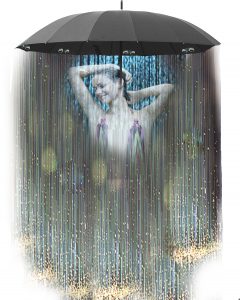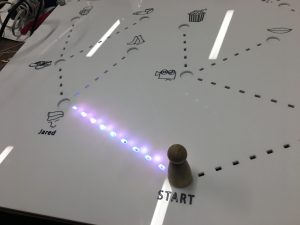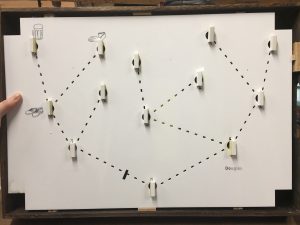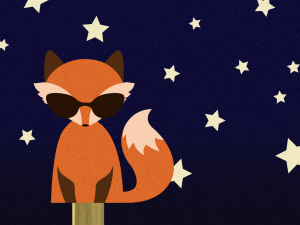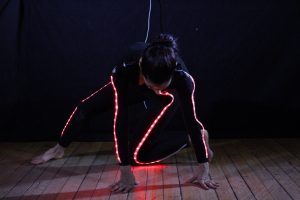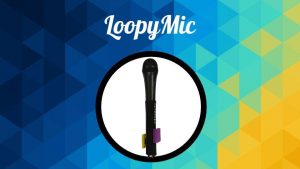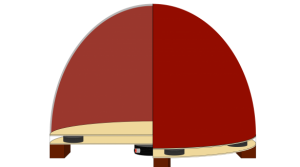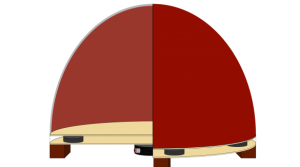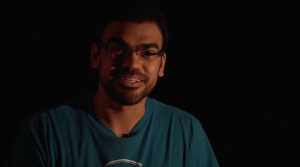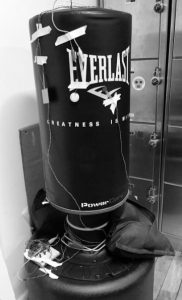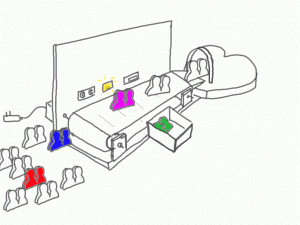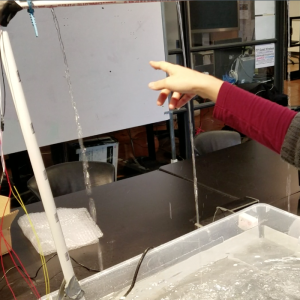Manning Qu
Feel how many people’s happiness are ignored in most countries around the world just because they are not the majority at a glance. An installation concern about LGBTQ topic that is more powerful than any data visualization.
Description
[What is it?]
It’s a physical installation from Intro to P-com class.
[What’s it about?]
To put it simple: it’s about gay marriage. While the whole United States were celebrating ‘Love Wins’, most counties around the world, people who are members of LGBTQ community are still being shut the door upon their face by marriage. However, to many people, this fact is just a statistic data they read in news. Is this work, I want to show the audience how ‘straight only’ marriage works and how many people’ life-long happiness are easily ignored by this kind system.
[What do you need for winter show?]
Only a small table (or share one with others). And an electronic outlet that I can reach with extension cord. The project is smaller than 15*15 inch.
[What tech & material you’re using?]
I’m using a stepper motor to drive a handmade conveyor belt (with lead screw and other parts) to transfer my wooden Symbols of couples, an ultrasonic distance sensor to see if there’s a couple, a color sensor to detect its color and a servo to push it down if it’s not ‘qualified’.
[How’s the user experience?]
(In future version, I want the users to randomly pick a country (or region) and put a random couple on the conveyor, and the machine would work according to the situation of the selected region (ex. If select the US, then the LGBTQ couple won’t be push down as they could get married in the US.)) But for now, the audience only need to pick one couple from the ‘trash box’ or the waiting area to the conveyor belt and watch. They will see that the straight couples going to the ‘Land of happy ever after’ smoothly, but the LGBTQ couples are pushing down to a trash box on the way there.
[What’s your perspective?]
I just want to show this fact visually and dynamically. Seeing those cute little ‘couples’ been pushed down, would be definitely more powerful than seeing data or report. I try not to be judgmental and demonstrate the idea in an empathy way. I won’t insult anyone as me myself belong to the community.
[Why should I choose you?] a. The concept could be interesting for some audience. And might even be a tiny little bit helpful for consciousness of equal rights.
b. To help me do better and become a better version of myself. I’m 100% sure I’m not the best, neither is my work. But I really cherish this opportunity, as it’s actually life-changing. At the beginning of the semester, I knew nothing about physical computing, and electric circuit and coding scares me. But now, here I am, building a project and apply for showing it. I really wish I could bring one of my work to SIGGRAPH, which I only participated as student volunteer before. Winter show would be a ideal start for me. As I told Rob when applying floor staff: I think I could do better when I have the responsibility to take care of others. Now I’m good at shop related things as a staff. I hope I could do better when I can hear from audiences from different background.
[How can you make sure you’ll be ready?]
It is still under construction right now. But I’ve figured out how to do it for every part of it. The hardest part is getting the right components to make the conveyor, and I’ve got them and found a tutorial that I’m following. And I talked to Hao(2nd year who made a conveyor), PP(also made conveyor before), Rubin, Jingwen and everyone that can help me. I’m sure it’ll be ready to show before the deadline, as I don’t want to lose this opportunity.
Classes
Introduction to Physical Computing ITPG-GT.2301.007, Intro to Fabrication

